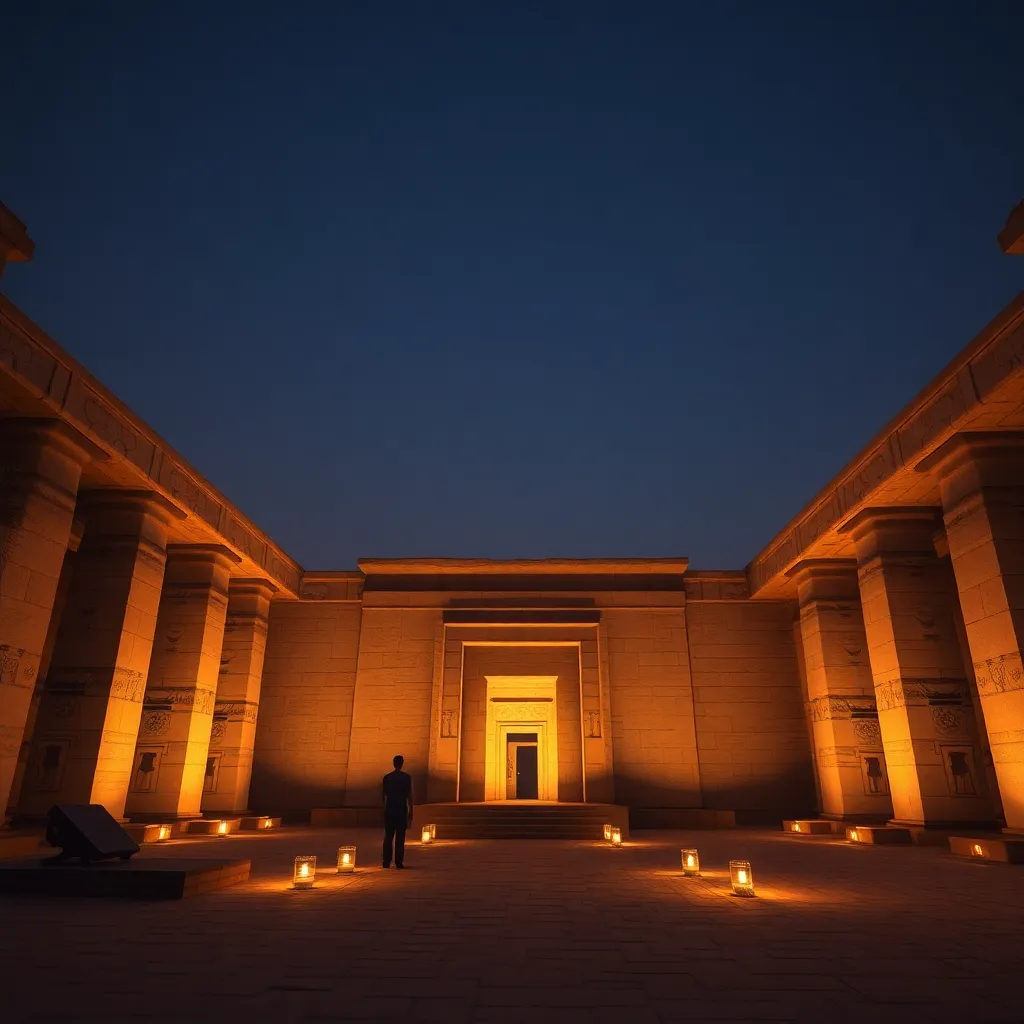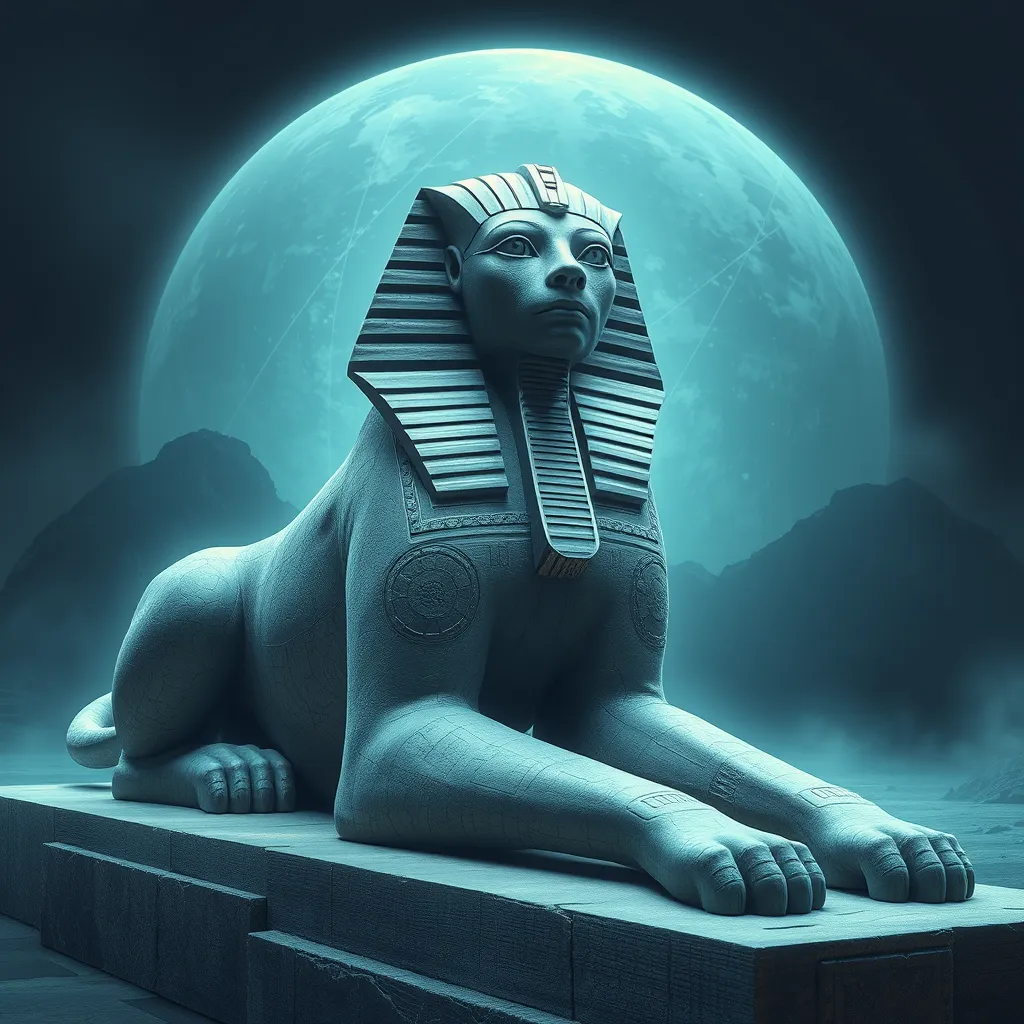The Anubis Shrine at Saqqara: Exploring the Temple Dedicated to the Jackal God
I. Introduction
Anubis, the ancient Egyptian god often depicted as a jackal or a man with a jackal’s head, holds a significant place in Egyptian mythology as the god of mummification and the afterlife. He was believed to guide souls through the underworld and protect the dead. His importance in funerary practices made him a central figure in the beliefs surrounding death and the afterlife in ancient Egypt.
Located in the necropolis of Saqqara, the Anubis Shrine is a remarkable representation of the spiritual and architectural ingenuity of ancient Egyptians. Saqqara served as a vast burial ground for the ancient capital of Memphis and is known for its extensive array of pyramids, tombs, and temples, making it a critical archaeological site.
This article aims to explore the Anubis Shrine at Saqqara, delving into its historical context, architectural features, cultural significance, and its relevance in both ancient and modern times.
II. Historical Context of Saqqara
Saqqara is one of the most important archaeological sites in Egypt, serving as a vast necropolis for the ancient city of Memphis. It spans over 7 kilometers and includes numerous pyramids, including the famous Step Pyramid of Djoser, which is considered a precursor to the later smooth-sided pyramids.
The significance of Saqqara varied across different dynasties, particularly during the Old Kingdom, when it became the primary burial site for the pharaohs. Notable features of Saqqara include:
- The Step Pyramid of Djoser, designed by the architect Imhotep.
- Extensive mastaba tombs with intricate carvings and inscriptions.
- Funerary temples dedicated to various gods, including Anubis.
Archaeological discoveries at Saqqara, such as the unearthing of mummified animals, burial artifacts, and inscriptions, have highlighted its importance as a center for ancient Egyptian funerary practices and religious beliefs.
III. The Anubis Shrine: Architecture and Design
The Anubis Shrine at Saqqara is notable for its unique architectural features that reflect the significance of Anubis in ancient Egyptian culture. The shrine is characterized by:
- Intricate stone carvings depicting Anubis in various poses, often in connection with mummification.
- A layout that incorporates sacred geometry, emphasizing balance and harmony.
- Rich symbolism, including motifs of jackals, which are associated with the protection of the dead.
In comparison to other temples dedicated to Egyptian deities, the Anubis Shrine stands out for its specific focus on the afterlife and mummification processes. Temples dedicated to gods like Osiris or Isis often emphasize fertility and rebirth, while the Anubis Shrine’s design is centered around death and the journey of the soul.
IV. The Role of Anubis in Ancient Egyptian Religion
Anubis played a crucial role in ancient Egyptian religion, primarily as the god of mummification and the afterlife. His responsibilities included overseeing the embalming process and guiding souls to the afterlife. Key aspects of Anubis’s role include:
- His association with the preservation of the body, ensuring the deceased could enjoy eternity in the afterlife.
- His depiction in rituals, where priests would invoke his name during mummification ceremonies.
- Artistic representations of Anubis, often found in tomb paintings and sculptures, showcasing him weighing the hearts of the deceased against the feather of Ma’at in the Hall of Judgment.
These practices and representations underscore the significance of Anubis in ancient Egyptian society and religion, reflecting the deep-seated beliefs surrounding death and the afterlife.
V. Archaeological Discoveries at the Anubis Shrine
The Anubis Shrine has yielded several significant archaeological findings that provide insight into ancient Egyptian burial practices and the worship of Anubis. Noteworthy discoveries include:
- Mummified animals, particularly jackals, which were offerings to Anubis.
- Artifacts such as amulets, pottery, and inscriptions that reveal the rituals performed at the shrine.
- Burial chambers that showcase the elaborate preparations made for the afterlife.
These discoveries have greatly enhanced our understanding of how the ancient Egyptians honored Anubis and the practices surrounding death and burial, illustrating the profound respect they held for the afterlife.
VI. The Anubis Shrine in Modern Context
Today, the Anubis Shrine is a focal point for archaeological study and tourism. Preservation efforts are underway to protect the site from the effects of time and environmental factors. Current initiatives include:
- Restoration of the shrine’s architecture to prevent further degradation.
- Research programs aimed at uncovering more about the rituals associated with Anubis.
- Educational programs for visitors to learn about ancient Egyptian culture and religious practices.
The shrine’s role in contemporary tourism has made it a significant attraction for those interested in ancient history, drawing visitors from around the globe who seek to understand Egypt’s rich cultural heritage.
VII. Cultural Significance of the Anubis Shrine Today
The Anubis Shrine continues to resonate in popular culture and modern spiritual practices. Its relevance can be seen in various areas:
- Film and literature often depict Anubis as a symbol of the afterlife, influencing modern storytelling.
- Some contemporary spiritual practices draw inspiration from ancient Egyptian beliefs, incorporating Anubis as a guide for those exploring the mysteries of life and death.
- Preserving ancient sites like the Anubis Shrine is crucial for educating future generations about the significance of cultural heritage.
VIII. Conclusion
The Anubis Shrine at Saqqara stands as a testament to the ancient Egyptians’ deep reverence for the afterlife and their complex religious beliefs. Its architectural beauty, combined with the rich history of Anubis as a deity, highlights the cultural significance of the site.
As we reflect on the enduring legacy of Anubis, it is clear that the lessons and stories from ancient Egypt continue to inspire and educate us today. There is a pressing need for continued exploration and preservation of Egypt’s archaeological heritage to ensure that these remarkable sites are protected for future generations.



